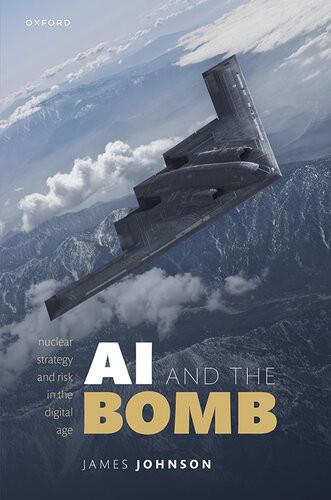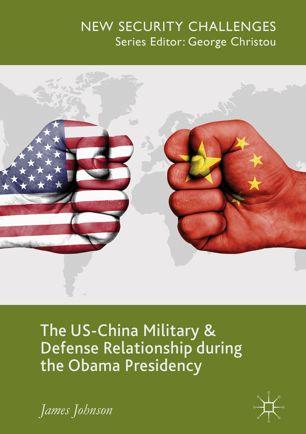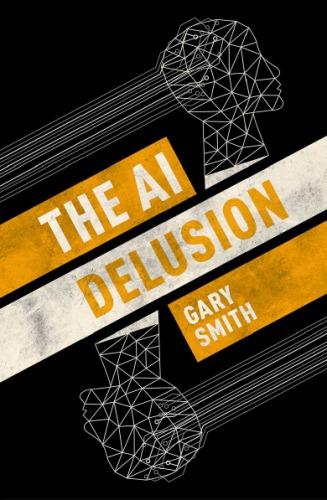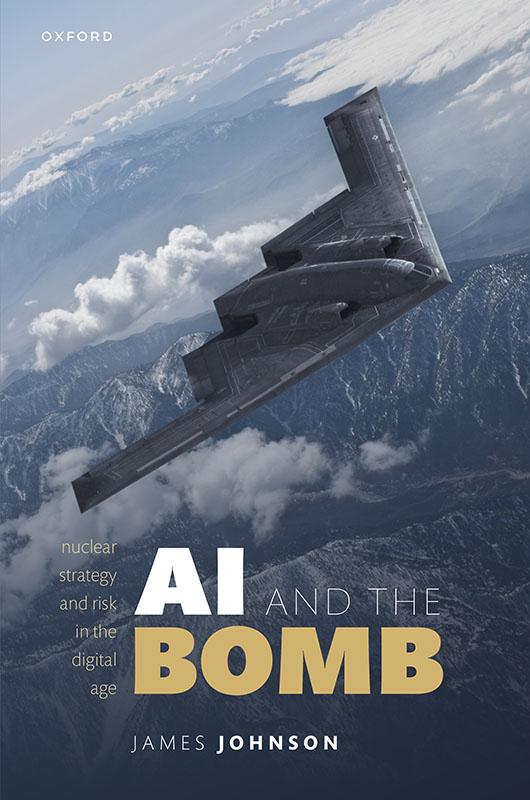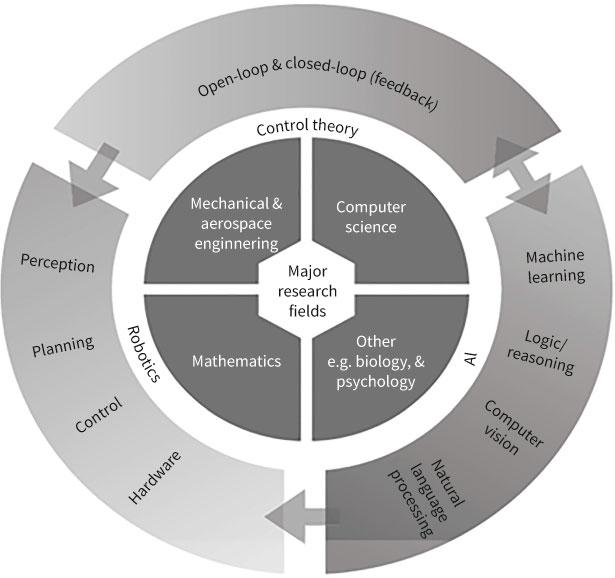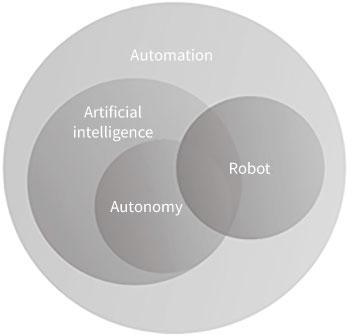Acknowledgments
I have incurred many debts in writing this book, which I cannot possibly repay. What I can do, however, is acknowledge them and express my sincere thanks. Many colleagues read, commented, and in various ways contributed to the book at its various stages. I am especially grateful to James Acton, John Amble, Greg Austin, John Borrie, Lyndon Burford, Jeffrey Cummings, Jeffrey Ding, Mona Dreicer, Sam Dunin, Andrew Futter, Erik Gartzke, Andrea Gilli, Rose Gottemoeller, Rebecca Hersman, Michael Horowitz, Patrick Howell, Keir Lieber, Jon Lindsay, Giacomo Persi Paoli, Kenneth Payne, Tom Plant, Daryl Press, Bill Potter, Benoit Pelopidas, Adam Quinn, Andrew Reddy, Brad Roberts, Mick Ryan, Daniel Salisbury, John Shanahan, Michael Smith, Wes Spain, Reuben Steff, Oliver Turner, Chris Twomey, Tristen Volpe, Tom Young, and Benjamin Zala. The book greatly benefits from their comments and criticisms on the draft manuscript and separate papers from which the book draws. My appreciation also goes to the many experts who challenged my ideas and sharpened my arguments on the presentations I have given at various international forums during the development of this book.
I have also enjoyed the generous support of several institutions that I would like to acknowledge, including: the James Martin Center for Non-Proliferation Studies; the Project on Nuclear Issues at the Center for Strategic and International Studies and the Royal United Services Institute; the Modern War Institute at West Point; the Vienna Center for Disarmament and Non-Proliferation; the Center for Global Security Research at Lawrence Livermore Laboratory; the US Naval War College, the UK Deterrence & Assurance Academic
Alliance; the International Institute for Strategic Studies, and the Towards a Third Nuclear Age Project at the University of Leicester. I would also like to express my thanks for the encouragement, friendship, and support of my colleagues in the Department of Politics and International Relations at the University of Aberdeen.
My appreciation also to the excellent team at Oxford University Press for their professionality, guidance, and support. Not to mention the anonymous reviewers, whose comments and suggestions kept me honest and improved the book in many ways. Finally, thanks to my amazing wife, Cindy, for her unstinting support, patience, love, and encouragement. This book is dedicated to her.
Contents
Listoffigures andtables
Listofabbreviations
Introduction: Artificial intelligence and nuclear weapons
1. Strategic stability: A perfect storm of nuclear risk?
2. Nuclear deterrence: New challenges for deterrence theory and practice
3. Inadvertent escalation: A new model for nuclear risk
4. AI-security dilemma: Insecurity, mistrust, and misperception under the nuclear shadow
5. Catalytic nuclear war: The new “Nth country problem” in the digital age?
Conclusion: Managing the AI-nuclear strategic nexus
Index
List of figures and tables
Figures
0.1 Major research fields and disciplines associated with AI
0.2 The linkages between AI and autonomy
0.3 Hierarchical relationship: ML is a subset of AI, and DL is a subset of machine learning
0.4 The emerging “AI ecosystem”
0.5 Edge decomposition illustration
0.6 The Kanizsa triangle visual illusion
0.7 AI applications and the nuclear deterrence architecture
1.1 Components of “strategic stability”
2.1 Russia’s Perimeter or “Dead hand” launch formula
2.2 Human decision-making and judgment (“human in the loop”) vs. machine autonomy (“human out of the loop”)
3.1 “Unintentional escalation”
Table
4.1 Security dilemma regulators and aggravators
List of abbreviations
A2/AD anti-access and area denial
AGI artificial general intelligence
APT advanced persistent threat
ASAT anti-satellite weapons
ATR automatic target recognition
C2 command and control
C3I command, control, communications, and intelligence
DARPA Defense Advanced Research Projects Agency (US DoD)
DL deep learning
DoD Department of Defense (United States)
GANs generative adversarial networks
ICBM intercontinental ballistic missile
ISR intelligence, surveillance, and reconnaissance
LAWS lethal autonomous weapon systems
MIRV multiple independent targetable re-entry vehicles
ML machine learning
NC3 nuclear command, control, and communications
NPT Non-Proliferation Treaty
PLA People’s Liberation Army
R&D Research and Development
RMA revolution in military affairs
SSBN nuclear-powered ballistic missile submarine
UAVs unmanned aerial vehicles
UNIDIR United Nations Institute for Disarmament Research
UUVs unmanned underwater vehicles
USVs unmanned surface vehicles
Introduction Artificial intelligence and nuclear weapons
On the morning of December 12, 2025, political leaders in Beijing and Washington authorized a nuclear exchange in the Taiwan Straits. In the immediate aftermath of the deadly confrontation—which lasted only a matter of hours, killing millions and injuring many more —leaders on both sides were dumbfounded about what caused the “flash war.”1 Independent investigators into the 2025 “flash war” expressed sanguinity that neither side deployed AI-powered “fully autonomous” weapons, nor intentionally violated the law of armed conflict—or the principles of proportionality and distinction that apply to nuclear weapons in international law.2 Therefore, both states acted in a contemporaneous and bonafide belief that they acted in self-defense—that is, lawfully under jus ad bellum use of military force.3
In an election dominated by the island’s volatile relations with Communist China in 2024, President Tsai Ing-wen—in another major snub to Beijing—pulled off a sweeping victory, securing her third term for the pro-independence Democrats. As the mid-2020s dawned, tensions across the Straits continued to sour, as both sides —held hostage to hardline politicians and hawkish military generals —maintained uncompromising positions, jettisoning diplomatic
gestures and inflamed by escalatory rhetoric, fake news, and campaigns of mis/disinformation. At the same time, both China and the US deployed artificial intelligence (AI) technology to support battlefield awareness, intelligence, surveillance, and reconnaissance (ISR), and early-warning and other decision-support tools to predict and suggest tactical responses to enemy actions in real-time. By late 2025, the rapid improvements in the fidelity, speed, and predictive capabilities of commercially produced dual-use AI applications4 persuaded great military powers not only to feed datahungry machine learning (ML) to enhance tactical and operational maneuvers, but increasingly to inform strategic decisions. Impressed by the early adoption and fielding by Russia, Turkey, and Israeli of AI tools to support autonomous drone swarms to outmaneuver and crush counterterrorist incursions on their borders, China synthesized the latest iterations of dual-use AI, despite sacrificing rigorous testing and evaluation in the race for first-mover advantage.5
With Chinese military incursions—aircraft flyovers, island blockade drills, and drone surveillance operations—in the Taiwan Straits marking a dramatic escalation in tensions, leaders in China and the US demanded the immediate fielding of the latest strategic AI to gain the maximum asymmetric advantage in scale, speed, and lethality. These state-of-the-art strategic AI systems were trained on a combination of historical combat scenarios, experimental wargames, game-theoretic rational decision-making, intelligence data, and learning from previous versions of themselves to generate novel and unorthodox strategic recommendations—a level of sophistication which often confounded designers and operators alike.6 As the incendiary rhetoric playing out on social media— exacerbated by disinformation campaigns and cyber intrusions on command and control (C2) networks—reached a fever pitch on both sides, a chorus of voices expounded the immediacy of a forced unification of Taiwan by China.
Buoyed by the escalatory situation unraveling in the Pacific—and with testing and evaluation processes incomplete—the US decided to bring forward the fielding of its prototype autonomous AI-powered “Strategic Prediction & Recommendation System” (SPRS)— supporting decision-making in non-lethal activities such as logistics, cyber, space assurance, and energy management. China, fearful of losing the asymmetric upper hand, fielded a similar decision-making support system, “Strategic & Intelligence Advisory System” (SIAS), to ensure its autonomous preparedness for any ensuing crisis, while similarly ensuring it could not authorize autonomous lethal action.
On June 14, 2025, the following events transpired. At 06:30 local time, a Taiwanese coast guard patrol boat collided with and sank a Chinese autonomous sea-surface vehicle conducting an intelligence recon mission within Taiwan’s territorial waters. On the previous day, President Tsai hosted a senior delegation of US congressional staff and White House officials in Taipei on a high-profile diplomatic visit. This controversial visit caused outrage in China, sparking a furious— and state abetted—response from Chinese netizens who called for a swift and aggressive military response.
By 06:50, the cascading effect that following—turbo-charged by AI-enabled bots, deepfakes, and false-flag operations—far exceeded Beijing’s pre-defined threshold, and thus capacity to contain. By 07:15, these information operations coincided with a spike in cyber intrusions targeting US Indo-Pacific Command and Taiwanese military systems and defensive maneuvers of orbital Chinese counter space assets, automated People’s Liberation Army (PLA) logistics systems were activating, and there was suspicious movement of the PLA’s nuclear road-mobile transporter erector launchers. At 07:20, US SPRS assessed this behavior as an impending major national security threat and recommended an elevated deterrence posture and a powerful demonstration of force. The White House authorized an autonomous strategic bomber flyover in the Taiwan Straits at 07:25.
In response, at 07:35, China’s SIAS notified Beijing of an increased communication loading between US Indo-Pacific Command and critical command and communication nodes at the Pentagon. By 07:40, SIAS raised the threat level for a pre-emptive US strike in the Pacific to defend Taiwan, attack Chinese-held territory in the South China Seas, and contain China. At 07:45, SIAS advised Chinese leaders to use conventional counterforce weapons, including cyber, anti-satellite, hypersonic weapons, and other smart precision missile technology (i.e., “fire and forget” munitions) to achieve early escalation dominance through a limited pre-emptive strike against critical US Pacific assets.
At 07:50, Chinese military leaders, fearful of an imminent disarming US strike and increasingly reliant on the assessments of SIAS, authorized the attack which SIAS had already anticipated and thus planned and prepared for. By 07:55, SPRS alerted Washington of the imminent attack—US C2 were reeling from cyber and antisatellite weapons attacks, and Chinese hypersonic missiles would likely impact US bases in Guam in sixty seconds—and recommended an immediate limited nuclear strike on China’s mainland to compel Beijing to cease its offensive. SPRS judged that US missile defenses in the region could successfully intercept the bulk of the Chinese theater (tactical) nuclear countervail—predicting that China would only authorize a response in kind and avoid a counter-value nuclear strike on the continental United States. SPRS proved correct. After a limited US-China atomic exchange in the Pacific, leaving millions of people dead and tens of millions injured, both sides agreed to cease hostilities.
In the aftermath, both sides attempted to retroactively reconstruct a detailed analysis of decisions made by SPRS and SIAS. However, the designers of the ML algorithms underlying SPRS and SIAS reported that it was not possible to explain the decision rationale and reasoning of the AI behind every subset decision. Besides, because of the various time, encryption, and privacy constraints
imposed by the end military and business users, it was impossible to keep retroactive back-testing logs and protocols. Did AI technology cause the 2025 “flash war”?
The emerging AI-nuclear nexus
“A problem well-stated is a problem half solved.”
—Charles Kettering7
We are now in an era of rapid disruptive technological change, especially in AI. “AI technology”8 is already being infused into military machines, and global armed forces are well advanced in their planning, research and development, and, in some cases, deployment of AI-enabled capabilities. Therefore, the embryonic journey to reorient military forces to prepare for the future digitized battlefield is no longer merely purview speculation or science fiction. While much of the recent discussion has focused on specific technical issues and uncertainties involved as militaries develop AI applications at the tactical and operational level of war, strategic issues have only been lightly researched. This book addresses this gap. It examines the intersection between technological change, strategic thinking, and nuclear risk—or the “AI-nuclear dilemma.”
The book explores the impact of AI technology on the critical linkages between the gritty reality of war at a tactical level and strategic affairs—especially nuclear doctrine and strategic planning. In his rebuttal of the tendency of strategic theorists to bifurcate technologically advanced weaponry into tactical and strategic conceptual buckets, Colin Gray notes that all weapons are tactical in their employment and strategic in their effects.9 An overarching question considered in the book is whether the gradual adoption of AI technology—in the context of the broader digital information ecosystem—will increase or decrease that state’s (offensively or defensively motivated) resort to nuclear use.
The book’s central thesis is two-fold. First, rapid advances in AI— and a broader class of “emerging technology”10 are transforming how we should conceptualize and thus manage and control technology and the risk of nuclear use. Second, while remaining cognizant of the potential benefits of innovation, complexity, information distortion, and decision-making compression associated with the burgeoning digital information age, they may also exacerbate existing tensions between adversaries and create new mechanisms and novel threats which increase the risk of nuclear accidents and inadvertent escalation.
To unpack these challenges, the book applies Cold War-era cornerstone nuclear strategic theorizing and concepts (nuclear deterrence, strategic stability, the security dilemma, inadvertent escalation, and accidental “catalytic” nuclear war) to examine the impact of introducing AI technology into the nuclear enterprise. Given the paucity of real-world examples of how AI may affect crises, deterrence, and escalation, bringing conceptual tools from the past to bear is critical. This theoretical framework moves beyond the hidebound precepts and assumptions—associated with bipolarity, symmetrical state-centric world politics, and classical rational-based deterrence—that still dominate the literature. The book argues that this prevailing wisdom is misguided in a world of asymmetric nuclear-armed dyads, nihilistic non-state actors, and non-human actors—or intelligent machines.
Drawing on insights from political psychology, cognitive neuroscience, and strategic studies, the book advances an innovative theoretical framework to consider AI technology and nuclear risk. Connecting the book’s central research threads are human cognitivepsychological explanations, dilemmas, and puzzles. The book draws out the prominent political psychological (primarily perceptual and cognitive bias) features of the Cold War-era concepts chosen and offers a novel theoretical explanation for why these matter for AI applications and nuclear strategic thinking. Thus, the book
propounds an innovative reconceptualization of Cold War-era nuclear concepts considering the impact of technological change on nuclear risk and an improved understanding of human psychology. It is challenging to make theoretical predictions aprioriabout the relationship between the development of AI technology and the risk of nuclear war. This is ultimately an empirical question. Because of the lack of empirical datasets in the nuclear domain, it is very difficult to talk with confidence about the levels of risk probably associated with nuclear use (accidental or deliberate). How can we know for sure, for instance, the number of nuclear accidents and near misses, and determine where, when, and the frequency with which these incidents occurred?11 Because much of the discussion about AI’s impact on nuclear deterrence, stability, escalation, crisis scenarios, and so on is necessarily speculative, counterfactual thinking can help policymakers who engage in forward-looking scenario planning but at the same time seek historical explanations.12
As scholar Richard Ned Lebow notes, the use of counterfactual thinking (or “what-if’s”) allows for scholars to account for the critical role of luck, loss of control, accidents, and overconfidence as possible causes of escalation, and the validity of other “plausible worlds” that counterfactuals can reveal.13 According to Lebow, for instance, “if the Cuban missile crisis had led to war—conventional or nuclear—historians would have constructed a causal chain leading ineluctably to this outcome.”14 In a similar vein, Pentagon insider Richard Danzig opined that while predictions about technology and the future of war are usually wrong, it is better to be circumspect about the nature of future war and be prepared to respond to unpredictable and uncertain conditions when prediction fails.15 Chapters 3 to 5 use counterfactual scenarios to illuminate some of the possible real-world implications of AI technology for mishaps,
misperception, and overconfidence in the ability to control nuclear weapons, as a potential cause of escalation to nuclear use.
There is an opportunity, therefore, to establish a theoretical baseline on the AI-nuclear strategic nexus problem-set. It is not the purpose of this book to make predictions or speculate on the timescale of AI technological progress, but rather, from AI’s current state, to explore a range of possible scenarios and their strategic effects. In this way, the book will stimulate thinking about concrete (short-to-medium term) vexing policymaking issues, including: tradeoffs in human-machine collaboration and automating escalation (i.e., retaining human control of nuclear weapons while not relinquishing the potential benefits of AI-augmentation); modern deterrence (i.e., regional asymmetric threats short of nuclear war and systemic global stability between great powers); and designing nuclear structures, postures, and philosophies of use in the digital age. How should militaries be using AI and applying it to military systems to ensure mutual deterrence and strategic stability?
The remainder of this chapter has two goals. First, it defines military-use AI (or “military AI”).16 It offers a nuanced overview of the current state of AI technology and the potential impact of dramatic advances in this technology (e.g., ML, computer vision, speech recognition, natural language processing, and autonomous technology) on military systems. This section provides an introductory primer to AI in a military context for non-technical audiences.17 Because of the rapidly developing nature of this field, this primer can only provide a snapshot in time. However, the underlying AI-related technical concepts and analysis described in this section will likely remain applicable in the near term. How, if at all, does AI differ from other emerging technology? How can we conceptualize AI and technological change in the context of nuclear weapons?
Second, it highlights the developmental trajectory of AI technology and the associated risks of these trends as they relate to the nuclear
enterprise. This section describes how AI technology is already being researched, developed, and, in some cases, deployed into the broader nuclear deterrence architecture (e.g., early-warning, ISR, C2, weapon delivery systems, and conventional weapons) to enhance the nuclear deterrence architecture in ways that could impact nuclear risk and strategic planning. In doing so, it demystifies AI in a broader military context, thus debunking several misperceptions and misrepresentations surrounding AI and the key enabling technologies associated with AI, including, inter alia, bigdata analytics, autonomy, quantum computing, robotics, miniaturization, additive manufacturing, directed energy, and hypersonic weapons. The main objective of this chapter is to establish a technical baseline that informs the book’s theoretical framework for considering AI technology and nuclear risk.
Military-use AI primer: What is AI and what can it do?
AI research began as early as the 1950s as a broad concept concerned with the science and engineering of making intelligent machines.18 In the decades that followed, AI research went through several development phases—from early exploitations in the 1950s and 1960s, the “AI summer” during the 1970s, through to the early 1980s, and the “AI Winter” from the 1980s. Each of these phases failed to live up to its initial, and often over-hyped, expectations— particularly when intelligencehas been confused with utility.19 Since the early 2010s, an explosion of interest in the field (or the “AI renaissance”) has occurred, due to the convergence of four critical enabling developments:20 the exponential growth in computing processing power and cloud computing; expanded datasets (especially “big-data” sources);21 advances in the implementation of ML techniques and algorithms (especially deep “neural networks”);22
and the rapid expansion of commercial interest and investment in AI technology.23 Notwithstanding the advances in the algorithms used to construct ML systems, AI experts generally agree that the last decade’s progress has had far more to do with increased data availability and computing power than improvements in algorithms per se.24
AI is concerned with machines that emulate capabilities usually associated with human intelligence, such as language, reasoning, learning, heuristics, and observation. Today, all practical (i.e., technically feasible) AI applications fall into the “narrow” category (or “weak AI”), or, less so, into the category of artificial general intelligence (AGI)—also referred to as “strong AI” or “superintelligence.”25 Narrow AI has been broadly used in a wide range of civilian and military tasks since the 1960s,26 and involves statistical algorithms (mostly based on ML techniques) that learn procedures by analyzing large training datasets designed to approximate and replicate human cognitive tasks (see Chapter 1).27 Narrow AI is the category of AI to which this book refers when it assesses the impact of AI technology in a military context.
Most experts agree that the development of AGI is at least several decades away, if feasible at all.28 While the potential of AGI research is high, the anticipated exponential gains in the ability of AI systems to provide solutions to problems today are limited in scope. Moreover, these narrow-purpose applications do not necessarily translate well to more complex, holistic, and open-ended environments (i.e., modern battlefields), which exist simultaneously in the virtual (cyber/non-kinetic) and physical (or kinetic) plains.29 However, that is not to say that the conversation on AGI and its potential impact should be entirely eschewed (see Chapters 1 and 2). If AGI does emerge, then ethical, legal, and normative frameworks will need to be devised to anticipate the implications for what would be a potentially pivotal moment in the course of human
history.30 To complicate matters further, the distinction between narrow and general AI might prove less of an absolute (or binary) measure. Thus, research on narrow AI applications, such as game playing, medical diagnosis, and travel logistics often results in incremental progress on general-purpose AI—moving researchers closer to AGI.31
AI has generally been viewed as a sub-field of computer science, focused on solving computationally complex problems through search, heuristics, and probability. More broadly, AI also draws heavily from mathematics, human psychology, biology, philosophy, linguistics, psychology, and neuroscience (see Figure 0.1).32 Because of the divergent risks involved and development timeframes in the two distinct types of AI, the discussion in this book is careful not to conflate them.33 Given the diverse approaches to research in AI, there is no universally accepted definition of AI,34 which is confusing when the generic term “artificial intelligence” is used to make grandiose claims about its revolutionary impact on military affairs— or revolution in military affairs (RMA).35 Moreover, if AI is defined too narrowly or too broadly, we risk understating the potential scope of AI capabilities; or, juxtaposed, fail to specify the unique capacity that AI-powered applications might have. A recent US congressional report defines AI as follows:
Any artificial system that performs tasks under varying and unpredictable circumstances, without significant human oversight, or can learn from their experience and improve their performance may solve tasks requiring humanlike perception, cognition, planning, learning, communication, or physical action (emphasis added).36
Figure 0.1 Major research fields and disciplines associated with AI
Source: James Johnson, ArtificialIntelligence &the Future ofWarfare: USA, China, andStrategic Stability (Manchester: Manchester University Press, 2021), p. 19.
In a similar vein, the US DoD defines AI as:
The ability of machines to perform tasks that typically require human intelligence—for example, recognizing patterns, learning from experience, drawing conclusions, making predictions, or taking action whether digitally or as the smart software behind autonomous physical systems (emphasis added).37
AI can be best understood as a universal term for improving the performance of automated systems to solve a wide variety of complex tasks, including:38 perception (sensors, computer vision, audio, and image processing); reasoning and decision-making (problem-solving, searching, planning, and reasoning); learning and knowledge representation (ML, deep networks, and modeling); communication (language processing); automatic (or autonomous) systems and robotics (see Figure 0.2); and human-AI collaboration (humans define the systems’ purpose, goals, and context).39 As a potential enabler and force multiplier of a portfolio of capabilities, therefore, military AI is more akin to electricity, radios, radar, and ISR support systems than a “weapon” per se.40
Figure 0.2 The linkages between AI and autonomy
Source: James Johnson, ArtificialIntelligence &the Future ofWarfare: USA, China, andStrategic Stability (Manchester: Manchester University Press, 2021), p. 20.
Machine learning is not alchemy or magic
ML is an approach to software engineering developed during the 1980s and 1990s, based on computational systems that can “learn” and “teach”41 themselves through a variety of techniques, such as neural networks, memory-based learning, case-based reasoning, decision trees, supervised learning, reinforcement learning, unsupervised learning, and, more recently, generative adversarial networks—which examine how systems that leverage ML algorithms might be tricked or defeated. 42 Consequently, the need for cumbersome human hand-coded programming has been dramatically reduced.43 From the fringes of AI until the 1990s, advances in ML algorithms with more sophisticated connections (i.e., statistics and control engineering) emerged as one of the most prominent AI methods (see Figure 0.3). In recent years, a subset of ML, deep learning (DL), has become the avant-garde AI software engineering approach, transforming raw data into abstract representations for a range of complex tasks, such as image recognition, sensor data, and simulated interactions (e.g., game playing).44 The strength of DL is its ability to build complex concepts from simpler representations.45
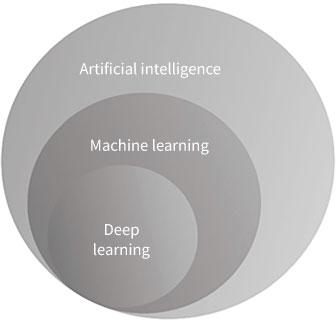
Figure 0.3 Hierarchical relationship: ML is a subset of AI, and DL is a subset of machine learning
Source: James Johnson, ArtificialIntelligence &the Future ofWarfare: USA, China, andStrategic Stability (Manchester: Manchester University Press, 2021), p. 22.
Alongside the development of AI and ML, a new ecosystem of AI sub-fields and enablers have evolved, including: image recognition, machine vision, predictive analysis and planning, reasoning and representation, natural language representation and processing, robotics, and data classification (see Figure 0.4).46 In combination, these techniques have the potential to enable a broad spectrum of increasingly autonomous applications, interalia: big-data mining and analytics; AI voice assistants; language and voice recognition aids; structured query language data-basing; autonomous weapons and autonomous vehicles; and information gathering and analysis, to name a few. One of the critical advantages of ML is that human engineers no longer need to explicitly define the problem to be resolved in a particular operating environment.47 For example, ML image recognition systems can be used to express mathematically the differences between images, which human hard-coders struggle to do.
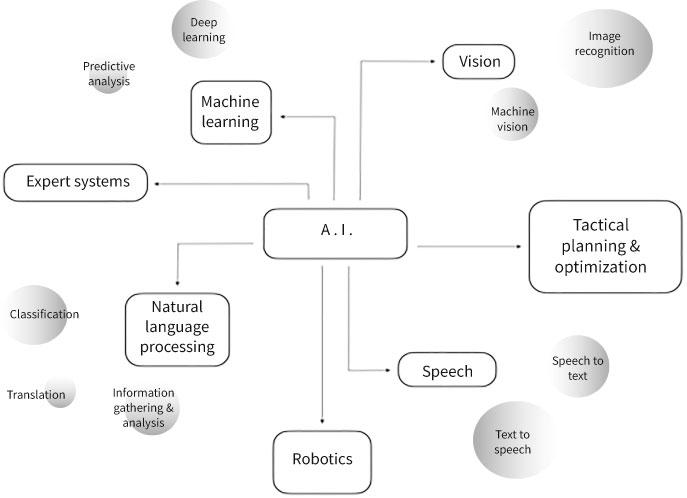
Figure 0.4 The emerging “AI ecosystem”
Source: James Johnson, ArtificialIntelligence &the Future ofWarfare: USA, China, andStrategic Stability (Manchester: Manchester University Press, 2021), p. 23.
ML’s recent success can be mainly attributed to the rapid increase in computing power and the availability of vast datasets to train ML algorithms. Today, AI-ML techniques are routinely used in many everyday applications, including: empowering navigation maps for ridesharing software; by banks to detect fraudulent and suspicious transactions; making recommendations to customers on shopping and entertainment websites; to support virtual personal assistants that use voice recognition software to offer their users content; and to enable improvements in medical diagnosis and scans.48
While advances in ML-enabled AI applications for IRS performance —used in conjunction with human intelligence analysis—could improve the ability of militaries to locate, track, and target an
adversary’s nuclear assets,49 four major technical bottlenecks remain unresolved: brittleness; a dearth of “quality” data; automated detection weaknesses; and the so-called “black box” (or “explainability”) problem-set.50
Brittleness problem
Today, AI suffers from several technical shortcomings that should prompt prudence and restraint in the early implementation of AI in a military context and other safety-critical settings such as transportations and medicine. AI systems are brittle in situations when an algorithm is unable to adapt to or generalize conditions beyond a narrow set of assumptions. Consequently, an AI’s computer vision algorithms are unable to recognize an object due to minor perturbations or changes to an environment.51 Because deep reinforcement learning computer vision technology is still relatively nascent, problems have been uncovered which demonstrate the vulnerability of these systems to uncertainty and manipulation.52 In the case of autonomous cars, for example, AI-ML computer vision cannot easily cope with volatile weather conditions. For instance, road lane markings partially covered with snow, or a tree branch partially obscuring a traffic sign—which would be self-evident to a human—cannot be fathomed by a computer vision algorithm because the edges no longer match the system’s internal model.53
Figure 0.5 illustrates how an image can be deconstructed into its edges (i.e., through mathematical computations to identify transitions between dark and light colors); while humans see a tiger, an AI algorithm “sees” sets of lines in various clusters.54
Figure 0.5 Edge decomposition illustration
Source: https://commons.wikimedia.org/wiki/File:Find edges.jpg, courtesy of Wessam Bahnassi [Public domain].
ML algorithms are unable to effectively leverage “top-down” reasoning (or “System 2” thinking) to make inferences from experience and abstract reasoning when perception is driven by cognition expectations, which is an essential element in safetycritical systems where confusion, uncertainty, and imperfect information require adaptions to novel situations (see Chapter 5).55 This reasoning underpins people’s common sense and allows us to learn complex tasks, such as driving, with very little practice or foundational learning. By contrast, “bottom-up” reasoning (or “System 1” thinking) occurs when information is taken in at the perceptual sensor level (eyes, ears, sense of touch) to construct a model of the world to perform narrow tasks such as object and speech recognition and natural language processing, which AIs perform well.56
People’s ability to use judgment and intuition to infer relationships from partial information (i.e., “top-down” reasoning) is illustrated by the Kanizsa triangle visual illusion (see Figure 0.6). AI-ML algorithms lack the requisite sense of causality that is critical for understanding
